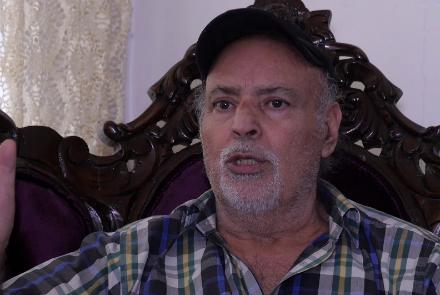Cultural elites and filmmakers in Afghanistan are concerned about Afghan cinema.
Latif Ahmadi, one of the country's most famous and prolific filmmakers, says that Afghanistan has a long and respected history of movie-making but it must be supported if it is to survive.
Ahmadi recalls the 1960s as the golden days of the art, and says the government has not supported culture and the arts in recent years.
Ahmadi says the government's lack of interest in cinema has led him to step down as director of Afghan Film, Afghanistan's only state-run film company.
However, during his six years of retirement, he wrote ten screenplays, recorded a serial, and prepared to release the film "Gomashta," which is about smuggling drugs in the coffins of Russian soldiers, that Ahmadi made thirty years ago.
“I made the nominated film at cinemascope, which was the first Scooby movie in Afghanistan. Unfortunately, at that time, the social conditions deteriorated a lot and wars started and everyone tried to escape, and the rest of the film remained,” said Ahmadi.
Forty-seven years ago, Latif Ahmadi entered the world of filmmaking by creating "Ariana Film" and recording short clips.
Ahmadi’s first feature film was called “Mujasama ha Mekhandand." He made “Seya Moh wa Jalali,” which was the first colored movie in Afghanistan, as well as “Hamas-e-Eshq,” another well-known movie.
A number of other filmmakers in the country say that Latif Ahmadi is one of the first filmmakers to lay the foundations of Afghan cinema.
“Due to the achievements of Mr. Latif Ahmadi and other filmmakers and directors at that time, today I enjoy watching those films and I am proud of my films,” said Saboor Sarbaz, an Afghan artist in the Netherlands.
“The success of Latif Ahmadi was more in the fact that he used the culture, traditions and customs that are common in Afghanistan and had a deep respect for these issues,” said Nemat Arash, another Afghan artist in Germany.
Ahmadi was in Moscow for twelve years during the civil war and during the rule of the Taliban, and worked as a diplomat for some of that time. He made the “Shirin Gul and Shir Agha” serial while in Moscow.
Ahmadi is 70 years old and lives in Kabul with his wife and children.
“I made the film “Gunah,” which is a great cinematic memory of mine that made millions of afghanis in Afghan cinema at the time,” Ahmadi added.
Latif Ahmadi has made fifty short and feature films so far.
“All this time--the ups and downs and the impact that security and politics had on cinema and other cultural sectors--although Latif was not far from these influences, we see that he has accomplished a lot of work,” said Roya Sadat, an artist.
Latif Ahmadi is an oil and gas engineer. He taught at Kabul University for three years and has been the president of the organization Afghan Film for twenty years.


